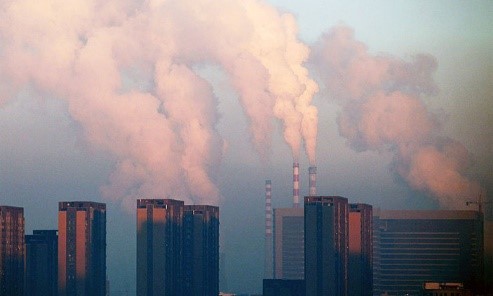World Environment Day
World Environment Day
The environment is the outer physical and biological system in which man and other organisms live.
 Today, our environment is getting affected by air pollution, water pollution, deforestation, soil pollution and other dangerous activities which ruins the environment and human lives.
Today, our environment is getting affected by air pollution, water pollution, deforestation, soil pollution and other dangerous activities which ruins the environment and human lives.To encourage worldwide awareness and action for the protection of the environment, the World Environment Day is celebrated since 1973 on 5 June every year. Each year it is organised around a theme which is based on environmental concerns.
The theme for 2019, ‘Beat Air Pollution’, calls for action to combat air pollution which is harmful for nature as well as the living organisms. China will host the global World Environment Day with this theme. China, with its growing green energy sector, has emerged as the climate leader. The Chinese government will be able to showcase its innovation and progress towards a cleaner environment.
The theme invites us to consider how we can change our lifestyle and activities to reduce the amount of air pollution.
Air pollution may seem difficult to tackle, but we can all do our part to reduce it. Understanding the cause of air pollution and how it affects health and environment will help us take steps towards improving it.
Causes of Air Pollution
 Vehicle Emissions: The emission from vehicles is one of the major sources of air pollution. Smoke and fumes emitted from vehicles such as cars, trucks, airplane, trains, etc., causes immense amount of air pollution. Vehicle emissions have been linked to nearly 400,000 premature deaths.
Vehicle Emissions: The emission from vehicles is one of the major sources of air pollution. Smoke and fumes emitted from vehicles such as cars, trucks, airplane, trains, etc., causes immense amount of air pollution. Vehicle emissions have been linked to nearly 400,000 premature deaths. Factories: Industrial pollution is one of the primary sources of environmental contamination. The presence of chemicals, particulates or biological compounds in the atmosphere harms the health of living beings and damage the environment. Since the dawn of industrial age, factories have caused pollution by burning fuels and releasing other harmful particles.
Agricultural activities: The main source of air pollution from agricultural activities is the heavily fertilised fields and livestock waste. Agricultural wastes mainly produce ammonia and methane gases. Around 24% of all greenhouse gases are emitted worldwide from the agriculture sector.
Open land and construction area: Large areas of open land and construction area have little to no vegetation. In these open lands, wind can naturally create dust storms. These dust storms contaminate air leading to breathing problems and several other diseases.
 Deforestation: It affects the atmosphere in several ways. Forests act as absorbers for carbon dioxide gases. Due to the cutting down of trees, the level of carbon dioxide has increased in atmosphere leading to global warming.
Deforestation: It affects the atmosphere in several ways. Forests act as absorbers for carbon dioxide gases. Due to the cutting down of trees, the level of carbon dioxide has increased in atmosphere leading to global warming.Other Sources: Volcanic eruptions, dust storms, sandstorms, etc. are also equally responsible for air pollution.
The key to prevent this problem is to educate students about the causes of air pollution and how it is harmful.
-
Educate students to use products which are eco-friendly.
-
Encourage them to opt for products which are not made of harmful chemical components.
-
Encourage them to organise campaigns on air pollution to inform people about its cause and ill effect on environment and living beings.
-
Discourage the burning of waste materials in open lands. Instead, suggest methods of composting.





















